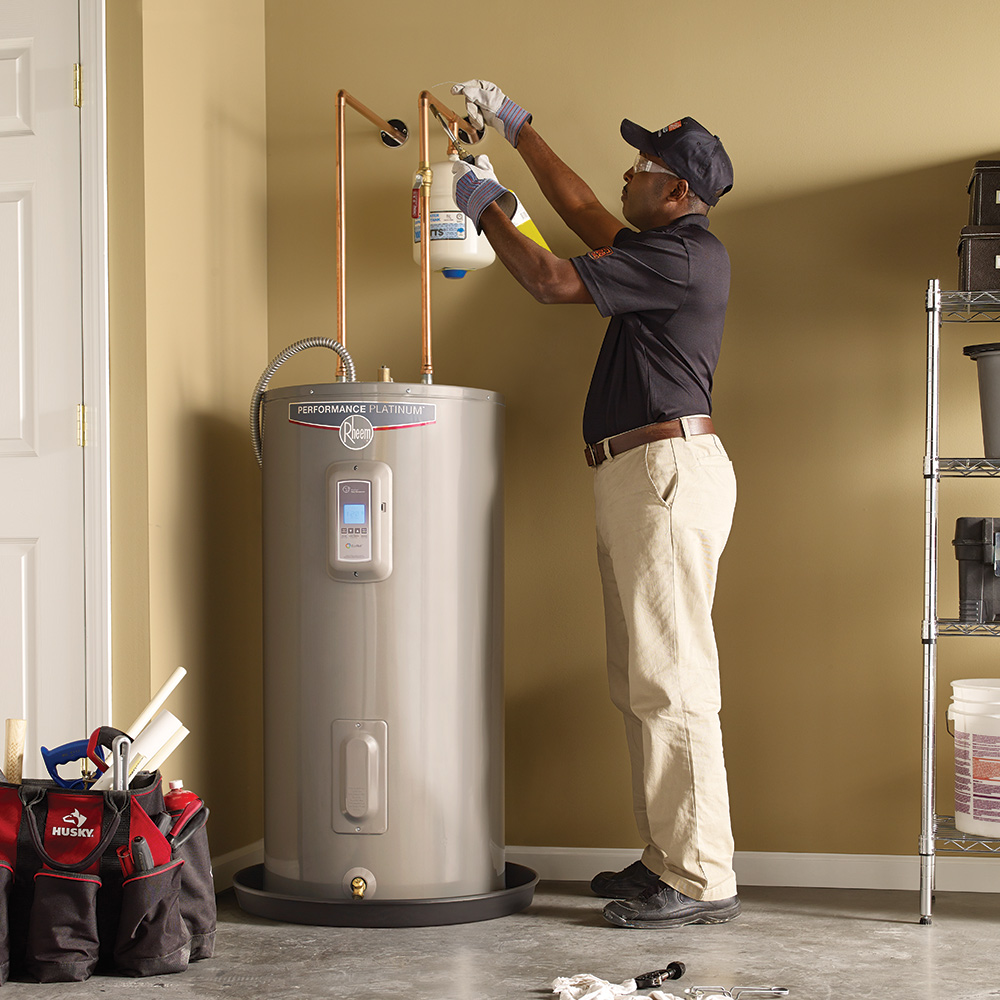Certified Gas Leak Repair for Your Protection and Comfort
Certified Gas Leak Repair for Your Protection and Comfort
Blog Article
Full Overview to Water Heating UnitSetup and Replacement
Understanding the intricacies of hot water heater installation and substitute is critical for homeowners seeking to ensure efficiency and integrity in their warm water supply. From picking the proper type and size to carrying out a seamless setup procedure, several aspects should be thought about to prevent typical risks. This overview will certainly supply you with the essential steps and insights to browse the intricacies of this home renovation task, while likewise emphasizing essential upkeep practices that can lengthen the life of your system. As you check out these elements, you may find yourself reassessing your current configuration and identifying areas for renovation.
Sorts Of Hot Water Heater
When taking into consideration hot water heater installation and substitute, it is important to recognize the different kinds of water heaters readily available in the market. One of the most typical kinds consist of storage tank hot water heater, tankless water heating units, heatpump hot water heater, and solar water heaters.
Container water heating units are standard systems that save a specific volume of hot water, making them conveniently offered when needed. In comparison, tankless water heating units provide warm water on need, removing the requirement for storage space.
Heatpump hot water heater make use of electrical energy to move warm from the air or ground to heat water, using significant power cost savings but calling for more area and specific installation problems. Lastly, solar water heating systems harness solar energy to warmth water, providing an eco-friendly option with possible lasting cost financial savings, although they commonly require a back-up system for over cast days.
Understanding these options ensures informed choices concerning installment and replacement, satisfying details demands and choices.
Selecting the Right Dimension
Picking the ideal size for a hot water heater is crucial to guarantee optimal efficiency and efficiency. A device that is too tiny will struggle to meet house demands, resulting in inconsistent warm water schedule and raised power usage. Alternatively, an extra-large water heating system can result in unnecessary power waste and greater energy bills.
To determine the appropriate dimension, take into consideration the home's top warm water usage. This can be computed based upon the variety of owners and their typical warm water requirements. For instance, a family members of 4 might require a hot water heater with a capacity of 50 to 80 gallons, relying on the usage patterns, such as simultaneous showers and laundry.
Additionally, examine the recovery rate, which determines how promptly a heater can restore hot water after it has actually been used. For tankless designs, focus on the circulation rate, measured in gallons per minute (GPM), to guarantee it satisfies the house's synchronised demand.

Setup Process Introduction

Next, the old system needs to be disconnected and gotten rid of, taking care to follow neighborhood codes and regulations regarding disposal. When the old device is out, the brand-new water heater can be placed in location. This step includes see this page attaching the water supply lines, making sure that all fittings are safe and secure and leak-free.
After establishing water links, it's necessary to link the power supply, whether electrical or gas, complying with the supplier's instructions thoroughly. As soon as all connections are made, the system must be loaded with water, and the power can be turned back on. It's essential to examine for leaks and guarantee the water heating system is functioning appropriately before finishing the installation process.
Usual Setup Mistakes

Another constant blunder is disregarding to adhere to local codes and regulations. Stopping working to stick to these standards can not just lead to security risks yet might likewise result in pricey fines or the demand for costly reinstallation.
Stopping working to secure connections or utilizing the incorrect type of fittings can lead to leakages and water damages. By avoiding these typical setup errors, home owners can guarantee their water heating system runs securely and successfully, making the most of performance and long life.
Upkeep Tips for Durability
Correct upkeep of a water heating system is necessary for its durability and ideal performance. Routine evaluations and maintenance can avoid expensive repairs and prolong the device's life expectancy. Begin by inspecting the temperature setting; it needs to normally be set between 120 ° F and 140 ° F for optimal energy effectiveness and security.
Every six months, purge the tank to eliminate sediment build-up, which can harm heating performance and trigger deterioration. To do this, turn off the heater, connect a hose pipe to the drain valve, and let the water run up until it is clear.
Anode poles need to be checked every year and replaced when they are corroded. These poles assist prevent storage tank corrosion by bring in corrosive components in the water.
In addition, inspect the pressure alleviation shutoff on a regular basis to guarantee it is operating appropriately. This shutoff is important for avoiding extreme pressure build-up within the tank.
Last but not least, consider arranging a professional maintenance check every couple of years for comprehensive evaluations and maintenance. By sticking to these upkeep tips, property owners can dramatically improve the effectiveness, safety, and life-span of their water heating units, ensuring trustworthy hot water for years to come.
Final Thought
In verdict, correct installation and upkeep of water heaters are critical for guaranteeing effectiveness and long life. By comprehending these crucial facets, home owners check can attain a reliable warm water supply while lessening possible problems connected to water heating system operation.
Recognizing the details of water heating unit installment and substitute is vital for property owners looking for to ensure effectiveness and dependability in their warm water supply.Storage tank water heating units are typical systems that keep a specific quantity of warm water, making them conveniently offered when required. In contrast, tankless water heating systems offer hot water on need, eliminating the demand for storage space. Selecting a water heater that is either too tiny or too huge can lead to ineffectiveness, resulting in poor hot water supply or extreme energy usage.
By comprehending these crucial facets, home owners can achieve a trusted warm water supply while lessening possible concerns connected to water heating unit operation. drain cleaning.
Report this page